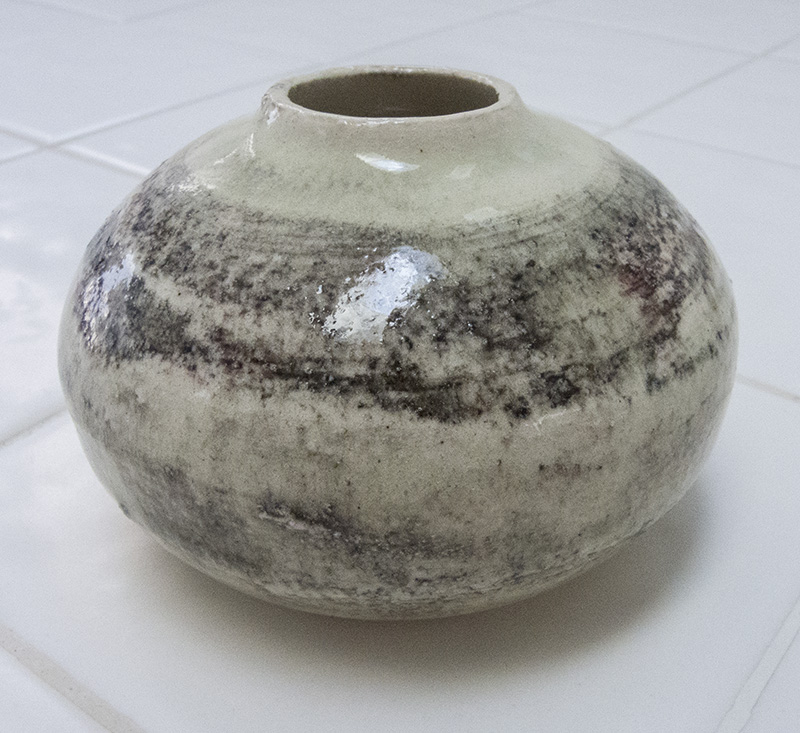These are photos from Marianne Cordyack’s salt firing workshop that I attended in West Virginia. And this is the reason why I haven’t posted any new pots in a while. I’ve been making pots for this workshop. Next week: the motherload. I’m told that unloading the kiln is like Christmas morning. I’m very excited to see the results!
The salt process is very interesting and quite manual all the way through. After individually making and bisque firing our pots at our local studios, we convened at Maryanne’s WVA studio to spend a few hours decorating and glazing. (At the end, it became quite a rush as each of us had 20+ pots!) Then we had to make “wads,” small bits of rolled clay (a recipe made from alumina hydrate, sand, flour, and two other ingredients I don’t remember) to glue to the bottom of pots so they don’t stick to the shelves during firing. Larger wads buffer the shelf bricks and the shelves. The kiln is homemade from special bricks that can be heated to very high temperatures and attached to a gas line. The loading of pots into the kiln took all afternoon and evening as each pot had to be carefully placed depending on its size, the type of clay used to make it, and the glaze used on it. Some needed to go nearer to or farther from the heat source than others, nearer the front of the kiln or in the back, etc. Lots of discussion and rearranging! The next big job was to brick up the front of the kiln. We didn’t finish until after 10 p.m..
The kiln was fired up at 5:30 a.m. the next morning. Then it was a job of monitoring the heat on the inside of the kiln by keeping an eye on the special clay cones placed in three strategic places within the kiln. When cone 11 bent over, the fire was hot enough to add the specially prepared rock salt (water softener salt ground up in a blender), 10 or 15 times (can’t remember exactly how many times–I was taking photos, not notes) in 10-minute increments. It was dump and run to get away from the salt fumes each time. The salt causes flashing to take place, with the result being speckles on the pots. It takes a few days for the kiln to cool down enough to unload.
Can’t wait for next Saturday!























































